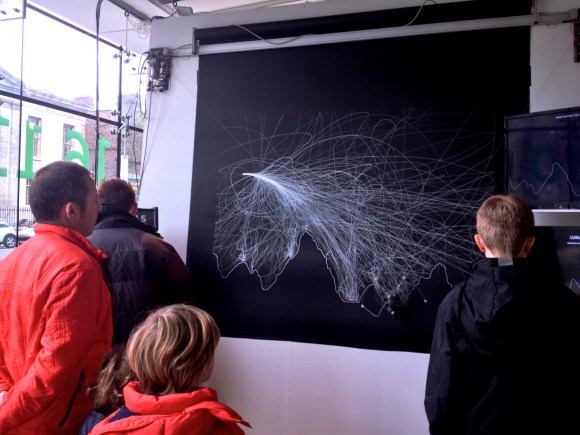
This art installation makes a video game from the 1970’s popular again. It can be found at the Dublin Science Gallery’s GAME exhibition. Museum goers step up to the coin-op style game cabinet and the onlookers will see how they’re doing as the landing is plotted on this board.
Hardware details are a bit hard to come by but we hear that there will me more on the build posted soon. For now the Flickr set is the best source of information. From reading the captions we know that a set of three Mac minis run everything. There are also a few close-ups and a video overview of the drive hardware which you can see mounted on the upper left of the image above. We can tell you that this is a string plotter similar to builds we’ve seen in the past. The telemetry data from the Lunar Lander game is converted to instructions and fed directly to that device. See it in action in the clip after the break.
[Thanks Sandy]














“that’s a great idea, I wish I thought of it”
-Spacedog looking on hackaday
That looks like a very well engineered plotter mechanism. What kind of ink does it use?
looks like blackboard chalk to me
as somebody trying to dev my own plotter , i find the hanging system that is conducting the power into the pen holder damn sexy !
That’s really cool, but can I suggest instead of using a pen with the plotter steal the technology from this hack.
http://hackaday.com/2012/11/09/laser-charged-glowing-display/#more-89827
I think the white ink on black surface is a very refreshing change from the usual phosphor glow or saturated LED colors you usually see on projects… Simple as it may be. (Not that this takes any merit from either project.)
Thanks so much for featuring my project on hackaday!
I will be posting more about the making of this project hopefully in the coming days, but I’d be happy to answer questions here or on twitter @seb_ly
I tried about 50 different pens but in the end I used silver Sharpies – they’re the cheapest option and they last a couple of hours. All the opaque paint pens I tried just dried up in 20 minutes or so.
And LineKernal, I’m glad you noticed the support wires are used to power the pen drop solenoid – that was a stroke of genius from the engineer I worked with, Paul Strotten. The power is transferred to the drum via a carbon brush and then directly into the wire. We’re using nylon coated steel fishing wire.
Thanks again for the write up!
Seb